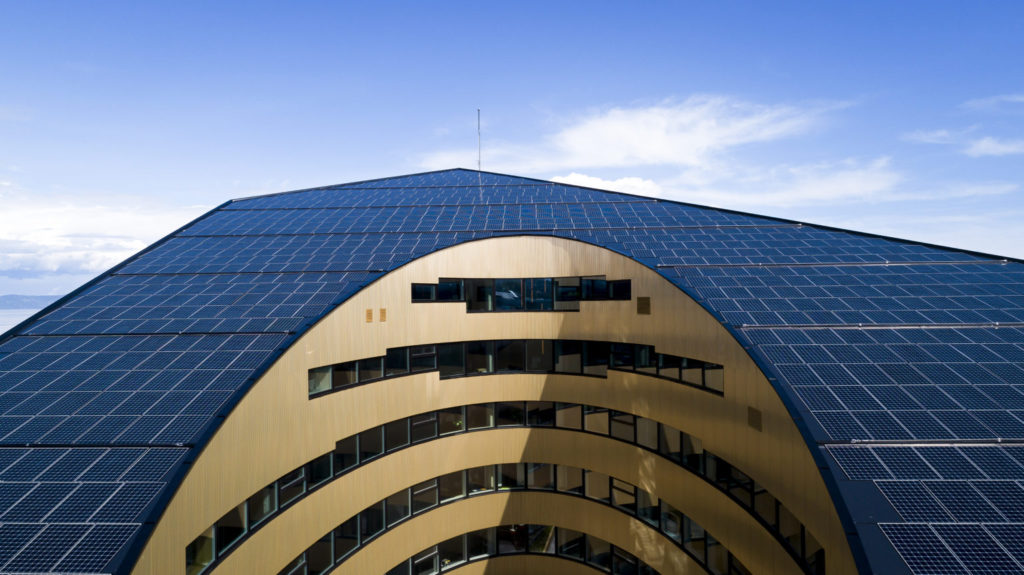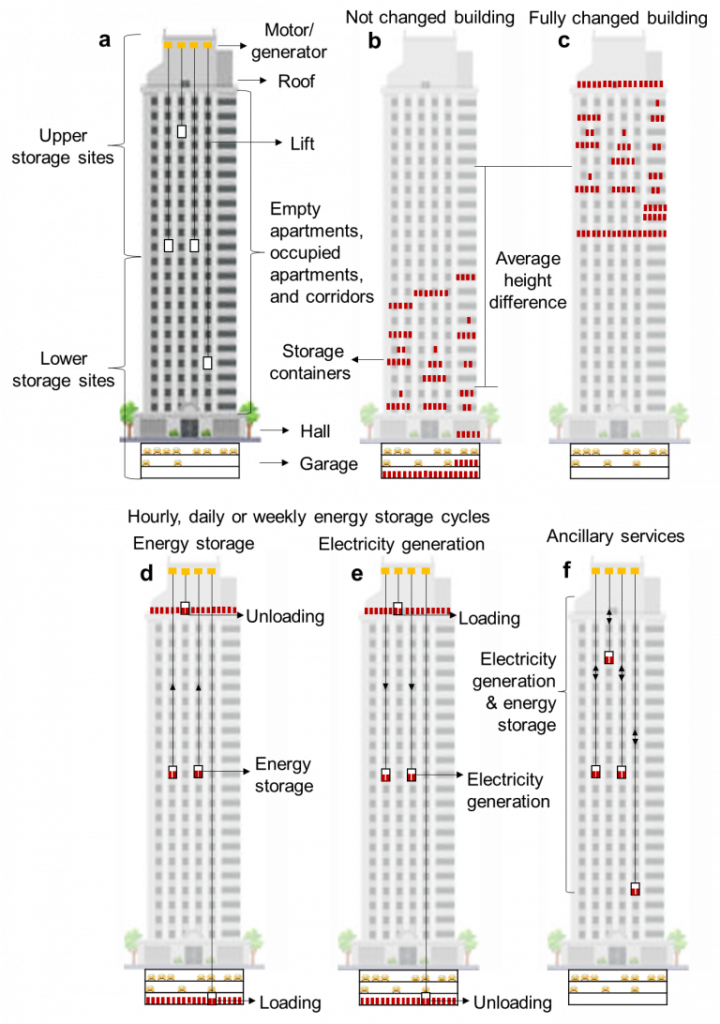Could high-rise lifts and empty flats be turned into batteries?
July 5, 2022
In densely built-up urban areas, it is possible—and increasingly affordable—for high-rise buildings to generate renewable energy through photovoltaic cells and wind turbines. But to properly balance supply with demand, the energy needs to be stored in batteries, which are still high in cost.

An example of photovoltaic cell application in Powerhouse Brattørkaia
Researchers from the International Institute for Applied Systems Analysis (IIASA) have come up with a new concept for energy storage by making use of things that are already there: lifts and empty spaces in tall buildings.
In their study published in the journal Energy, IIASA researchers proposed a novel gravitational-based storage solution called Lift Energy Storage Technology (LEST). The system will be able to store energy by remotely lifting wet sand containers or other high-density materials using autonomous trailers that go in and out of lifts.
“The concept of LEST came to me after having spent a considerable amount of time going up and down in a lift since recently moving into an apartment on the 14th floor,” explained lead author Julian Hunt, a researcher in the IIASA Sustainable Service Systems Research Group.
There are over 18 million lifts in operation globally, and many of these spend a significant amount of time sitting still. The idea is that when the lifts are not being used to transport people, it can be used to store or generate electricity.
“I have always been fascinated with topics involving potential energy, in other words, generating energy with changes in altitude, such as hydropower, pumped-storage, buoyancy, and gravity energy storage,” Hunt said. “The concept of gravity energy storage has also recently received significant attention in the scientific community and start-ups.”
Advantages and considerations
According to the authors, the main challenge in making a gravity energy storage solution viable is the power capacity cost. The advantage of LEST is that the power capacity is already installed in lifts with regenerative braking systems, so there is no need for additional investment or space occupancy to create extra value for the power grid and the building owner.
As with any new system, there are still a few details that need to be further refined before the system can be deployed. This includes finding room to store the weights the system relies on at the top of the building when the system is fully charged, and at the bottom of the building when the system is discharged. In this regard, empty apartments or corridors could be viable options.
Another consideration is the ceiling bearing capacity of existing buildings where the system is installed, that is, the total mass in kilograms per square meter that the ceiling can support without collapsing.
Lift Energy Storage Technology (LEST) (a) system components, (b) not changed and (c) fully charged building, (d) operating on energy storage, (e) electricity generation, or (f) ancillary services mode. Image © Hunt et al. (2022)
Steps forward
Being able to store energy where electricity is mostly consumed, such as in cities, will greatly benefit the energy grid. This is where LEST could provide an alternative for decentralized ancillary services.
“Environmentally friendly and flexible storage technologies like LEST are set to become more and more valuable to society in a future where a large share of its electricity comes from renewables,” concluded Behnam Zakeri, co-author of the study. “Therefore, policymakers and power system regulators need to adopt strategies to incentivize end users, in this case, high-rise buildings, to share their distributed storage resources, such as LEST, with the central grid. The coordinated utilisation of such distributed resources alleviates the need for investment in large-scale central storage systems.”
References
Hunt, J.D., Nascimento, A., Zakeri, B., Jurasz, J., Dąbek, P.B., Franco Barbosa, P.S., Brandão, R., José de Castro, N., Filho, W.L., Riahi, K. (2022). Lift Energy Storage Technology: A solution for decentralized urban energy storage, Energy DOI: 10.1016/j.energy.2022.124102
Related stories:
Daylight ducts for high-rise offices

The Sky as a Source of Cooling & Other Tropical Innovations

Powerhouse Brattørkaia: The World’s Northernmost Energy-Positive Building

Read more stories from FuturArc 2Q 2022: New & Re-Emerging Architecture!

To read the complete article, get your hardcopy at our online shop/newsstands/major bookstores; subscribe to FuturArc or download the FuturArc App to read the issues.
Previously Published Commentary, Online Exclusive Feature
Contact us at https://www.futurarc.com/contact-us for older commentaries.

